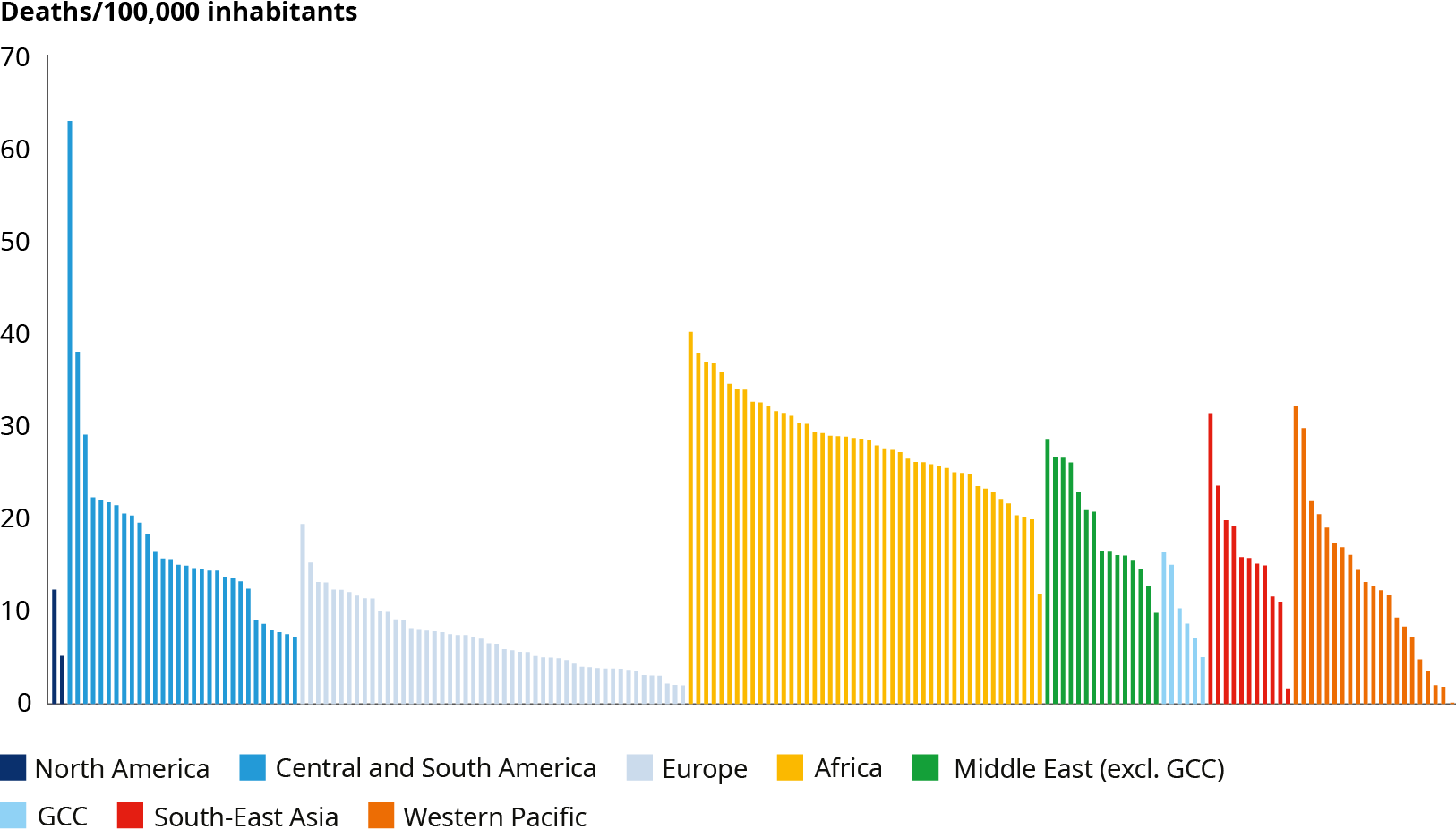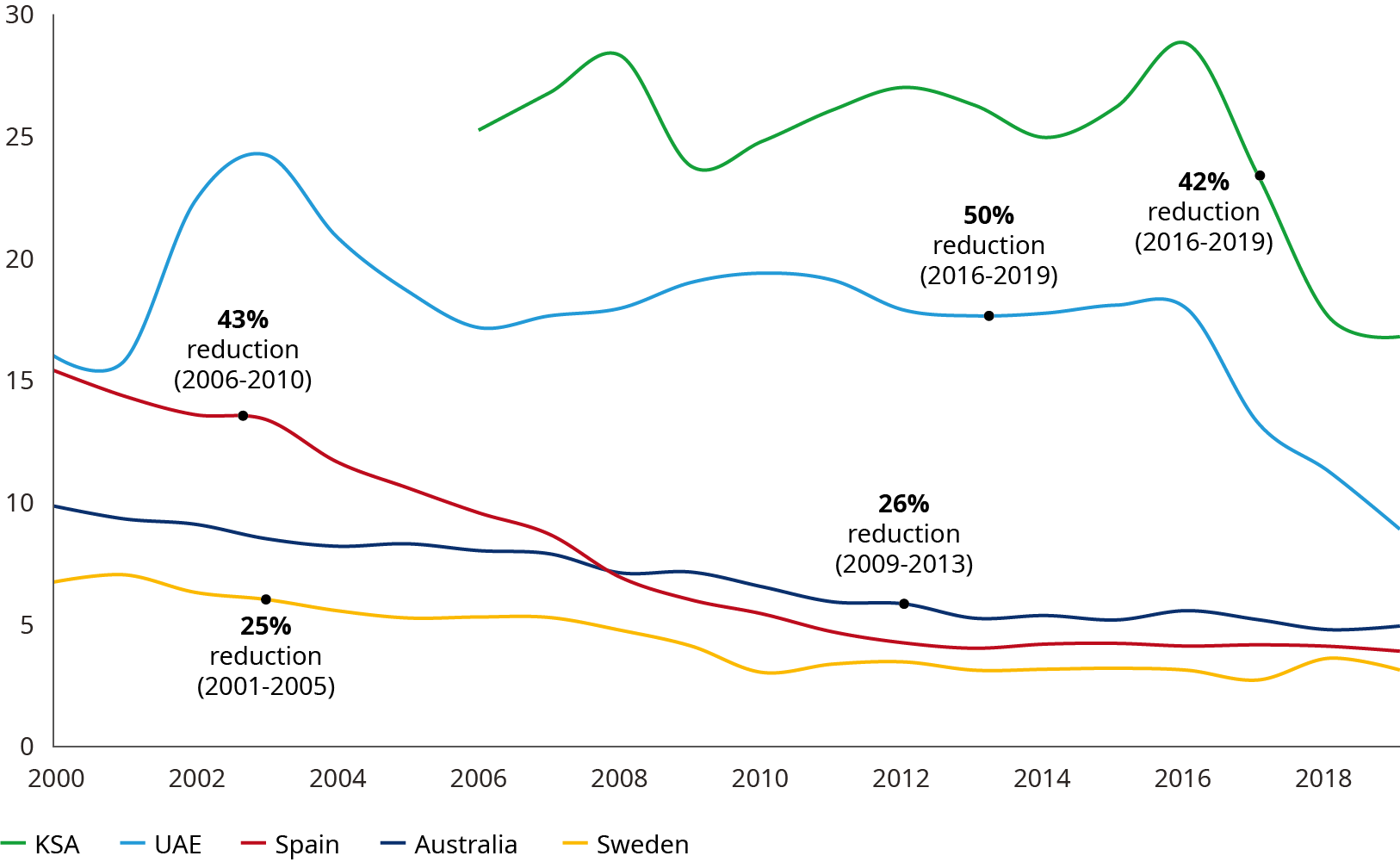Traffic safety is one of the road sector’s most paramount key performance indicators. Overall, the term refers to the practices and strategies that are implemented to prevent road users from getting injured or killed. “Road users” in this context include vehicle drivers, pedestrians, cyclists, motorists, their passengers, as well as the passengers of on-road public transport, such as buses and trams.
According to the World Health Organization, approximately 1.3 million people are killed in road traffic accidents annually, and 20-50 million suffer serious injuries. This creates a multifaceted burden on society. From a social perspective, families are torn apart and left in mourning. In terms of health, individuals may face physical disabilities, psychological trauma, and cognitive impacts. Economically, there are significant costs associated with healthcare and medical treatments, material damages like car and road repairs, and impacts on the labor force.
While the cost to human life is reason enough to tackle this issue, it isn’t the only consequence of poor traffic safety. It is estimated that road traffic accidents cost most countries 3% of their gross domestic product (GDP) — that’s the equivalent of a $2.91 trillion drag on the global economy.

What are the global approaches to solving the problem? Traffic safety is a primary agenda item worldwide, with multiple international and local institutions involved at all levels. Policy in this area is typically implemented through a top-down approach. Inter-governmental institutions and governments define the broader agenda, which the independent institutions then support. The private sector is also important when it comes to driving awareness and instilling a traffic safety consciousness in both employees and society at large.
The list of root causes for traffic safety issues is long, with poor infrastructure, unsafe driving habits, under-resourced emergency response teams, and a lack of traffic safety awareness and education being the most common factors.
Tailoring each strategy for optimal success
The best approaches to traffic safety are always evolving. Safety technologies are changing rapidly, as are road ecosystems and the cities we live in. Plus, each city is entirely unique. In short, there really is no one-size-fits-all approach. Each strategy should be tailored to a nation’s (or a city’s) starting point. Factors such as the current mortality rates and levels of awareness must be factored in when tailoring an approach, for instance.
By analyzing the policies and initiatives of 25 public and private sector leaders, our team of experts identified 15 building blocks for a world-class traffic safety approach. These are structured into the categories of direction, pillars, and enablers.
We believe that Ambition, Users and Behavior, as well as three enablers (Enforcement, Education and Awareness, and Technology and Data) should be prioritized due to their disproportionate impact.
Countries with high mortality rates

This group refers to nations with fatalities of more than 10 per 100,000 inhabitants. From our perspective, these nations should aim for programs that secure short-term, aggressive reductions in deaths and severe injuries. Examples of effective strategies were those implemented by the UAE and the Kingdom of Saudi Arabia. Both jurisdictions had high initial fatality rates (above 25 at their peak) and achieved a more than 50% reduction in just a few years.
Countries with medium-low mortality rates
This group includes countries that already have medium-low mortality levels (a ratio of below 10). Such nations should push to continue bending the curve, using incremental actions to drive mortality rates lower, especially in areas still prone to accidents. We refer to Sweden, Spain, and Australia as relevant examples (their current mortality ratios hover around the five mark).
Increased traffic safety brings social and economic benefits

Our experience in supporting governments and decision-makers with both the planning and implementation of traffic safety strategies demonstrates that the typical journey is a phased approach, and that once started, implementation needs to be continuous.
Quantifying impact is complex and depends on the starting point and the level of investment required to make changes, among other factors. We have developed a proprietary methodology to estimate the return on investment when it comes to traffic safety for policymakers. Our method follows international literature and best practices, while considering specific nuances of the local economy that is implementing the change.
While an increase in traffic safety is clearly of paramount importance because it saves lives, we have also worked on ways to estimate the socioeconomic impact of enhanced traffic safety, which has two components:
- The investment-related multiplier effect in the economy
- The impact of reducing traffic-related fatalities, serious injuries, and minor accidents.
After we have calculated the benefits of traffic safety, we then need to consider all the investments required to meaningfully improve it (based on the pillars and enablers described in our building blocks section — such as infrastructure, traffic management, technology, and education).
These costs should be calculated from the bottom up, with detailed budgets for each specific investment/initiative.
Our hands-on experience indicates that the return on investment for governments when it comes to traffic safety is significant. To illustrate:
- Countries with high initial mortality rates (of above 10 per 100,000 inhabitants) that apply particularly effective programs with rapid results.
- Countries that push for “bending the curve” (these nations have fatality rates of below 10 to begin with), achieve multipliers of 5-10 times.
Traffic safety strategies save lives and improve our societies overall. The approach to traffic safety should be comprehensive and unique to each situation, and should cover all themes. However, the true cornerstones of a successful traffic safety program are users and behavior, enforcement, education, technology, and data.
While levels of improvement will differ, countries and cities should continue to pursue traffic safety irrespective of their starting point. This is because there is plenty of potential to continually raise performance levels across all situations, and, universally, safety investments yield attractive socio-economic returns that have a big impact on society.
